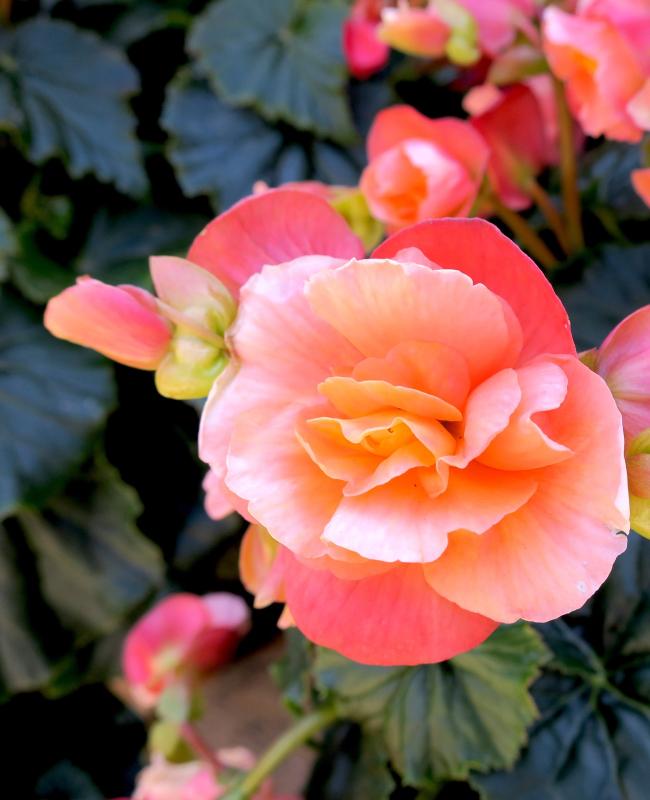
In recent years, tuberous begonias have enjoyed renewed popularity as beautiful new cultivars became available in the gardening industry. Tuberous begonias are grown for their flowers, which can range from 1/2 inch across to large exhibition types with flowers the size of dinner plates. Flowers may be single or double and are available in every color except blue, some with colored petal edges.
Flowers on tuberous begonias occur in threes on short stems. The two smaller, single flowers are females. The larger, usually double flower, is male. The female flowers can be removed so the male flower reaches its full size.
Plants may be either trailing or upright. Trailing plants work best in hanging baskets or tall containers where they show to their best effect spilling over the sides. Upright plants can also be grown in containers; they may need staking especially if the flowers are very large.
If you've grown tuberous begonias in the past, you may have tried saving your tubers over winter with the goal of growing them out again the following summer. If so, now is the time to get your plants growing again for spring.
Potting Up
Tuberous begonias are easily and quickly started from tubers. For spring flowering plants, start the tubers in February or early March.
First, determine which side is up. Begonia tubers are concave, so the round end down is the base and should be down. The scooped-in side should be face upward in the container.
Choose a soil mix containing peat moss, sphagnum moss or vermiculite in open trays. Provide temperatures of 70°F. Place tubers 3 to 4 inches apart with the tuber tops about ½ inch below the moss surface. Place the trays in indirect sunlight. Since begonia tubers tend to rot easily, water them sparingly until new growth appears. Don't let water accumulate in the hollow-out portion of the tubers. Supplemental lighting is not needed during this period.
Roots will develop from the bottom, sides and top of the tubers. Within 4 to 5 weeks there should be about one inch of stem and leaf growth. At that point, it's time to repot the tubers into individual containers for continued growth. Repot the tubers into 5- or 6-inch pots. Use a good soil mix consisting of sandy loam, well-rotted manure or peat moss, and compost.
Locate the potted plants in an east window where they will receive bright light, but little direct sunlight. Provide supplemental light if necessary so that plants develop short sturdy stems, not tall leggy ones. Do not allow the temperature to drop below 60°F at night.
You can expect small tubers to produce small plants, while larger tubers produce large plants.
Planting Outdoors
Harden plants off over a two-week period before planting them outside. After the last spring frost, transplant begonias into their final location outdoors making sure the soil is well-drained. A location providing plants with wind protection and minimal direct morning or afternoon sun is best. A little direct morning or late afternoon sun will not harm them, but dappled light is best for the majority of the day. However, if shade is too heavy plants may become tall and leggy.
Tuberous begonias are not drought tolerant, so require consistent watering. They are also heavy feeders; fertilize them regularly with a dilute balanced fertilizer throughout the growing season for best growth and bloom.
Tuberous Begonias as Houseplants
Tuberous begonias require a dormant period every year, whether grown in a greenhouse or outdoors, so they are not a good choice as a year-round houseplant. Other begonia types, such as Reiger or Rex begonias, perform better as houseplants.